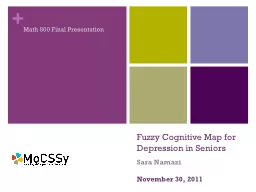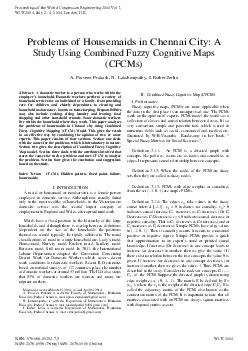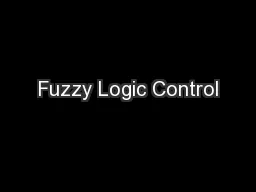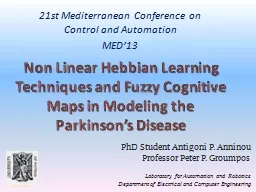PPT-Fuzzy Cognitive Map for Depression in Seniors
Author : olivia-moreira | Published Date : 2017-06-24
Sara Namazi Math 800 Final Presentation November 30 2011 Outline Fuzzy Cognitive MapFCM for Deviance Model Scenarios on Deviance FCM Introduction to Depression
Presentation Embed Code
Download Presentation
Download Presentation The PPT/PDF document "Fuzzy Cognitive Map for Depression in Se..." is the property of its rightful owner. Permission is granted to download and print the materials on this website for personal, non-commercial use only, and to display it on your personal computer provided you do not modify the materials and that you retain all copyright notices contained in the materials. By downloading content from our website, you accept the terms of this agreement.
Fuzzy Cognitive Map for Depression in Seniors: Transcript
Download Rules Of Document
"Fuzzy Cognitive Map for Depression in Seniors"The content belongs to its owner. You may download and print it for personal use, without modification, and keep all copyright notices. By downloading, you agree to these terms.
Related Documents














